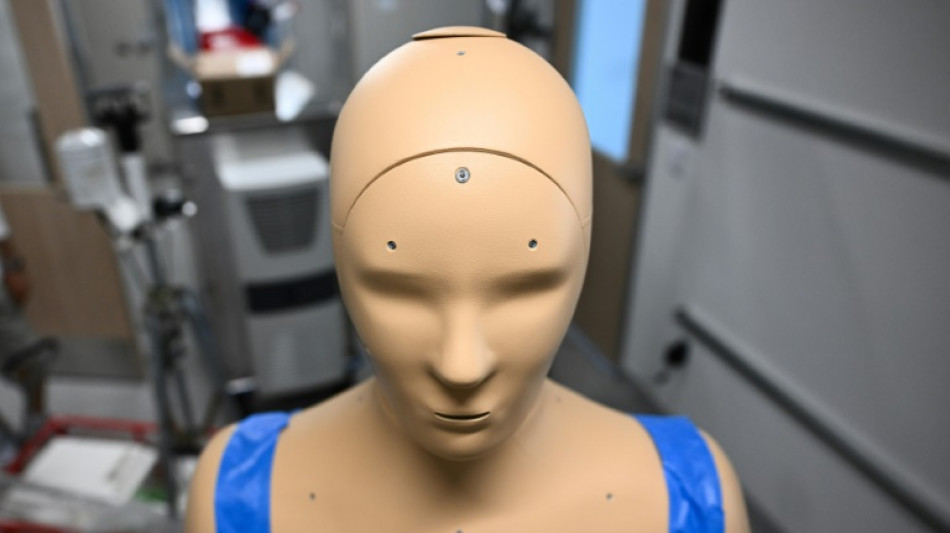
-
 Leeds beat Everton for perfect start to Premier League return
Leeds beat Everton for perfect start to Premier League return
-
'Ketamine Queen' to plead guilty over drugs that killed Matthew Perry

-
 Guirassy sends struggling Dortmund past Essen in German Cup
Guirassy sends struggling Dortmund past Essen in German Cup
-
Stocks under pressure as Zelensky-Trump talks underway

-
 Alcaraz wins Cincinnati Open as Sinner retires
Alcaraz wins Cincinnati Open as Sinner retires
-
Trump floats Ukraine security pledges in talks with Zelensky and Europeans

-
 Doak joins Bournemouth as Liverpool exodus grows
Doak joins Bournemouth as Liverpool exodus grows
-
Excessive force used against LA protesters: rights group

-
 Panama hopes to secure return of US banana giant Chiquita
Panama hopes to secure return of US banana giant Chiquita
-
'Things will improve': Bolivians look forward to right's return

-
 Trump welcomes Zelensky with fresh optimism on peace deal
Trump welcomes Zelensky with fresh optimism on peace deal
-
Israeli controls choke Gaza relief at Egypt border, say aid workers
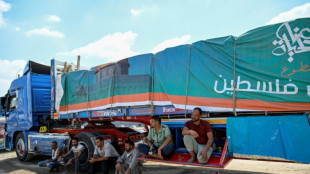
-
 Air Canada flight attendants vow to defy latest back-to-work order
Air Canada flight attendants vow to defy latest back-to-work order
-
Hurricane Erin drenches Caribbean islands, threatens US coast
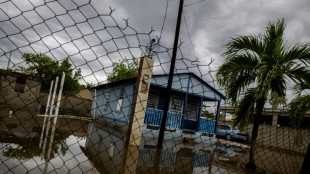
-
 Europeans arrive for high-stakes Trump and Zelensky talks
Europeans arrive for high-stakes Trump and Zelensky talks
-
Trump, Zelensky and Europeans meet in bid to resolve split over Russia

-
 Hamas accepts new Gaza truce plan: Hamas official
Hamas accepts new Gaza truce plan: Hamas official
-
Stocks under pressure ahead of Zelensky-Trump talks

-
 Russian attacks kill 14 in Ukraine ahead of Trump-Zelensky talks
Russian attacks kill 14 in Ukraine ahead of Trump-Zelensky talks
-
Lassana Diarra seeks 65 mn euros from FIFA and Belgian FA in transfer case

-
 Air Canada flight attendants face new pressure to end strike
Air Canada flight attendants face new pressure to end strike
-
Alonso says 'no excuses' as Real Madrid prepare for La Liga opener

-
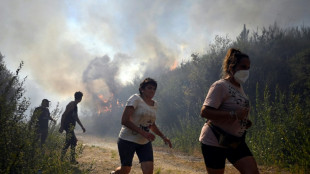 Deadly wildfires rage across Spain as record area of land burnt
Deadly wildfires rage across Spain as record area of land burnt
-
Swedish ex-govt adviser goes on trial over mislaid documents

-
 Injured Springboks captain Kolisi out for four weeks
Injured Springboks captain Kolisi out for four weeks
-
Irish literary star Sally Rooney pledges UK TV fees to banned pro-Palestine group

-
 Stocks mixed ahead of Trump-Zelensky talks
Stocks mixed ahead of Trump-Zelensky talks
-
Son of Norway princess charged with four rapes

-
 Forest sign French forward Kalimuendo
Forest sign French forward Kalimuendo
-
Zelensky warns against 'rewarding' Russia after Trump urges concessions

-
 FIFA boss condemns racial abuse in German Cup games
FIFA boss condemns racial abuse in German Cup games
-
Spain and Portugal battle wildfires as death toll mounts
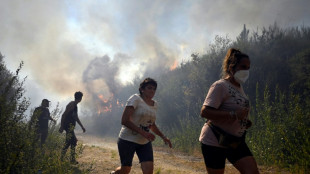
-
 Joao Felix says late Jota 'will forever be part of football history'
Joao Felix says late Jota 'will forever be part of football history'
-
Javelin star Kitaguchi finds new home in small Czech town
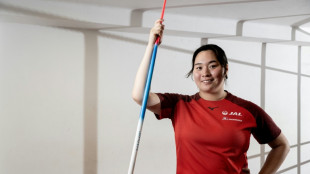
-
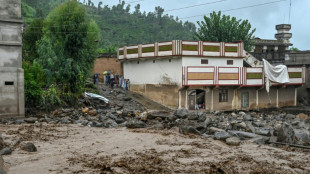 Rain halts rescue operation after Pakistan floods kill hundreds
Rain halts rescue operation after Pakistan floods kill hundreds
-
Zelensky says Russia must end war, after Trump pressures Ukraine

-
 US envoy says Israel's turn to 'comply' as Lebanon moves to disarm Hezbollah
US envoy says Israel's turn to 'comply' as Lebanon moves to disarm Hezbollah
-
Fight to save last forests of the Comoros unites farmers, NGOs
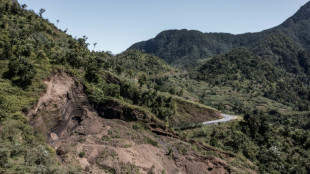
-
 Hong Kong court hears closing arguments in tycoon Jimmy Lai's trial
Hong Kong court hears closing arguments in tycoon Jimmy Lai's trial
-
Five killed in Russian drone attack on Ukraine apartment block
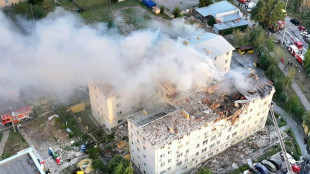
-
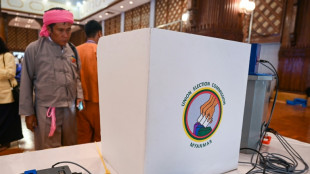 Myanmar junta sets December 28 poll date despite raging civil war
Myanmar junta sets December 28 poll date despite raging civil war
-
German minister says China 'increasingly aggressive'

-
 Singapore key exports slip in July as US shipments tumble 42.7 pct
Singapore key exports slip in July as US shipments tumble 42.7 pct
-
German great Mueller has goal ruled out on MLS debut for Vancouver

-
 Zelensky, European leaders head to US for talks on peace deal terms
Zelensky, European leaders head to US for talks on peace deal terms
-
Tourism deal puts one of Egypt's last wild shores at risk
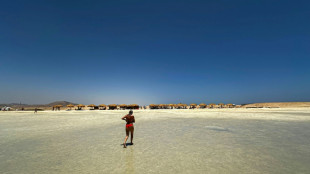
-
 Two right-wing candidates headed to Bolivia presidential run-off
Two right-wing candidates headed to Bolivia presidential run-off
-
Australian court fines Qantas US$59 million for illegal layoffs

-
 Games industry in search of new winning combo at Gamescom 2025
Games industry in search of new winning combo at Gamescom 2025
-
Rooms of their own: women-only communities thrive in China


A sweaty robot may help humans understand impact of soaring heat
What happens to the body when a human gets heatstroke? How can we protect ourselves in a warming planet? To answer these burning questions, Arizona researchers have deployed a robot that can breathe, shiver and sweat.
The southwestern state's capital Phoenix is currently enduring its longest heat wave in history: on Friday, the mercury exceeded 110 degrees Fahrenheit (43 degrees Celsius) for the 22nd day in a row, an ominous demonstration of what's to come in a world impacted by climate change.
For humans, such heat represents a potentially lethal threat, one that is still not fully understood. But for ANDI -- a one-of-a-kind humanoid robot at Arizona State University -- it's a lovely day out.
"He's the world's first outdoor thermal mannequin that we can routinely take outside and ... measure how much heat he is receiving from the environment," mechanical engineering professor Konrad Rykaczewski told AFP.
ANDI is "a very realistic way to experimentally measure how a human person responds to extreme climate" without putting people themselves at risk, Rykaczewski says.
At first glance, ANDI -- which stands for Advanced Newton Dynamic Instrument -- resembles a simple crash-test dummy.
But its epoxy/carbon fiber skin conceals a treasure trove of technology, such as a network of connected sensors that assess heat diffused through the body.
ANDI also has an internal cooling system and pores allowing it to breathe and sweat. There are 35 independent thermal zones and, like humans, the robot -- which cost more than half a million dollars to build -- sweats more from its back.
Until now, only a dozen or so mannequins of this type existed, and none of them could venture outdoors.
They were mainly used by sports equipment manufacturers to test their technical clothing in thermal chambers.
- Hyperthermia, a 21st century condition -
Researchers hope the robot will provide a better understanding of hyperthermia -- that is, when a body overheats, a condition that is threatening a growing proportion of the world's population as a result of global warming.
For obvious ethical reasons, "nobody measures core temperature increase while somebody's getting heatstroke," says Rykaczewski. But the effects of heat on the human body are still not fully comprehended. ANDI gives researchers a chance to understand.
Accompanied by MaRTy (Mean Radiant Temperature), a mobile weather station that measures the heat reflected by the buildings around it, the robot is taking its first steps outside in Phoenix -- an ideal laboratory in which to prepare for tomorrow's climate.
"How do we change what we wear? How do we change our behavioral patterns, and adjust them to temperatures that are of this order of magnitude?" says Rykaczewski.
Andi is also infinitely reprogrammable. The research team can make "digital twins of the mannequin to look at different segments of the population," explains Jennifer Vanos, a climatologist involved in the project.
For example, the older you get, the less you sweat. Young people will need different protection from athletes or people in poor health. With ANDI, scientists can simulate the thermoregulatory mechanisms specific to each individual.
- Phoenix, test lab for the future -
They can also test the robot in a variety of situations. For example, Phoenix is dry -- what about humid heat? How does the human body cope in hot winds?
Their research will be useful for designing heat-resistant clothing, rethinking urban planning and protecting the most vulnerable.
In Phoenix, which opens dozens of cooling centers for the homeless every summer, their findings could guide the actions of social workers.
"How long should a person stay in a cooling center to cool off, so that their core temperature goes down to a level that's safe again? We can answer that question with Andi," says Vanos.
The team also dreams of developing low-cost sensors to be used on building sites to adjust working hours according to the heat actually felt on site and the health of the workers -- rather than based on general weather conditions.
That could be a "step towards better safety than just these blank recommendations per city, per state, per country," Rykaczewski says.
Such specific, tailored solutions could have global impacts, redrawing entire cities.
"If the future of Paris looks like Phoenix now, we can learn a lot about how do we design buildings," says Rykaczewski.
C.Meier--BTB
